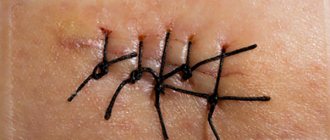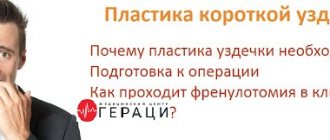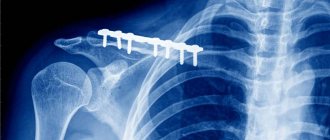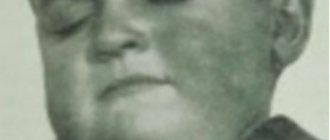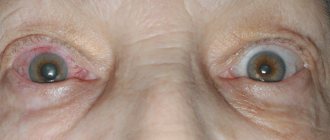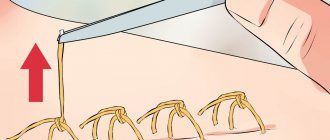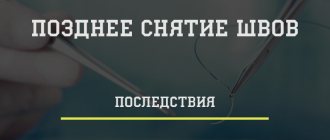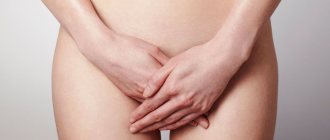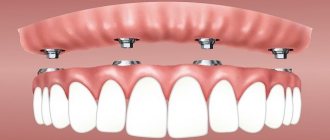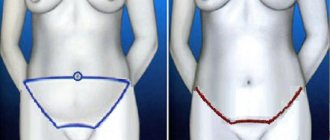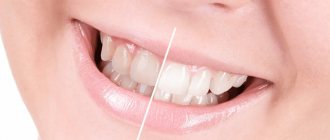To understand why suture dehiscence occurs after sinus lifting and bone grafting, you first need to understand the methods of surgical intervention. Sinus lifting is a type of osteoplasty and the most common type of surgery. Osteoplasty is used to restore a lost tooth by introducing bone material into the location and subsequently attaching an artificial tooth.
Bone grafting is a surgical intervention in the upper or lower jaw for the correction and anatomical restoration of bone tissue and alveolar processes, for subsequent implantation of tooth replacement elements.
Indications for osteoplasty are:
- uneven volume of bone tissue for initialization of a dental implant;
- elimination of defects of the upper or lower jaw after injuries or operations performed to remove various tumors;
- aesthetic correction of the upper and lower jaw with bone tissue atrophy;
- surgery for complications arising in the upper and lower jaw due to infectious-purulent lesions of bone tissue, and subsequently its destruction and thinning;
- impossibility of performing classical prosthetics
Also, do not forget about absolute and relative contraindications to osteoplasty. The absolute ones include:
- Chronic diseases in the stage of sub- and decompensation;
- Blood diseases in which clotting is affected;
- Mental disorders, HIV and other seropositive infections;
Relative contraindications include:
- Diseases in the acute phase, especially viral and bacterial in the oral cavity and respiratory system;
- Post-infarction and post-stroke conditions that are less than 1 year old;
- Pregnancy in any trimester and breastfeeding;
- The risk of developing blood poisoning in those patients who have had rheumatism or endocarditis and have a replaced valve;
- Staying on chemotherapy or other treatment that impairs tissue regeneration and has an increased effect of foreign tissue rejection;
These contraindications are temporary, and when the body’s condition is stable and healthy, you can begin the first stage of preparation again. Everything is done in order to reduce the risk of complications after osteoplasty and sinus lifting.
Briefly about the introduction of dental implants
To install a metal structure into the bone tissue, it is necessary to make an incision in the mucous membrane. At the end of the surgical intervention, suturing is required. If the outcome of the operation is favorable and there are no consequences, the surgical threads are removed after about 10 days.
The operation process itself is completely painless for the patient, this is thanks to high-quality anesthetic drugs. A little pain is possible only during the rehabilitation period. If you follow all the doctor’s recommendations, all troubles can be avoided, however, not always everything depends only on the patient’s behavior.
Types of operations for osteoplasty and sinus lifting
As already written above, sinus lifting is a type of osteoplasty, but in addition to this type of surgical intervention, there are also techniques that are often used in traditional maxillofacial surgery. Bone grafting techniques are divided into two large groups:
- Transplantation of an autogenous or other type of implant. As a result of this type of osteoplasty, the height and/or width of the alveolar ridge can be effectively increased.
- Splitting technique on the mandibular or maxillary bone when the width of the bone tissue is insufficient. This operation is less traumatic and has another advantage, as it allows you to simultaneously install an implant for an artificial tooth.
Whatever the operation, minimally invasive or conventional, soft tissues are still injured, which subsequently need to be sutured. Maxillofacial surgeons mainly use synthetic, especially strong threads that can either dissolve within 2-4 weeks or not. Non-absorbable threads are made from silk, polystyrene and polytetrafluoroethylene.
Silk threads have proven themselves to be durable and mobile in terms of tying knots. But there is a drawback: they contain a protein that can cause an allergic reaction. Polystyrene threads are as strong as silk, but do not cause any allergic or inflammatory reactions and are a good choice for use in maxillofacial surgery. Polytetrafluoroethylene or monofilament threads are also widely used in surgery and have good anti-inflammatory and adaptive abilities. They are often used to secure periodontal membranes. But they are quite rigid at the edges, and they should be covered with bandages so as not to cause trauma to the soft tissues of the cheeks and lips.
Absorbable ones include natural (catgut) and synthetic (Dexon, Vicryl).
These threads have anti-inflammatory properties and are widely used in surgery, but they require special knowledge in tying knots.
Why do the seams come apart?
According to statistics, implant failure does not occur very often. However, such a complication can lead to serious consequences, the main one being non-healing of the structure. Let's look at the most common reasons for this phenomenon:
- Individual characteristics of the body, mainly the incorrect structure of the jaw or rejection of the material from which the thread is made can play a role.
- Not sterile conditions, due to which the wound got infected. Severe swelling and hyperemia occurs, which causes the seam to diverge.
- Neglecting advice from specialists. This may include errors in nutrition or lack of hygiene and medication measures.
- Poor quality surgical thread.
- Insufficient experience of the doctor, due to which the suturing process was performed incorrectly.
Features of implantation
Implantation is used to restore the functionality and aesthetics of the dentition. The procedure involves screwing the implant into the bone, which requires first making an incision in the gum. The process is traumatic, requiring the following operations:
- tissue preparation, making an incision on the gum and periosteum;
- drilling a bed into the bone to install the structure;
- screwing the implant into the prepared hole;
- suturing soft tissues.
Normally, discomfort and pain go away within a couple of days, and the stitches are removed after a week. But if the patient violates the care recommendations or for other reasons, the stitches may come apart. This is accompanied by increased pain, swelling, and the development of inflammatory processes.
Symptoms of seam dehiscence
Remember that the presence of aching pain, slight swelling and discomfort in the oral cavity is considered normal within three days from the date of surgery. Let's look at a few signs that may indicate seam separation:
- Presence of blood on the wound. It may come out abundantly or leak slightly.
- Body temperature may be several degrees higher than normal.
- The pain does not go away, but only intensifies.
- Swelling, feeling of pulsation and redness of soft tissues.
- Sometimes there is the formation of pus and an unpleasant taste in the mouth.
Complications after abdominoplasty
Regardless of the complexity of the plastic surgery or the experience of the surgeon, there is a risk of complications. Abdominoplasty confidently occupies a leading position in the ranking of traumatism, so possible complications after abdominoplasty are very high.
The Plastic Surgery Center guarantees high quality service at all stages. The patient is in constant contact with the surgeon, any assistance is always immediately provided, and in case of any negative changes during rehabilitation, you should immediately consult with your doctor.
Important!
Possible complications after abdominoplasty are divided into general and local. Only a well-trained specialist from a plastic surgery clinic who performed the operation can determine how to deal with the difficulties that have arisen.
General complications
Conducted statistical studies show that 0.3-1.1 percent of patients after tummy tuck complain of complications affecting important systems of the body. If the reaction is untimely, general complications can not only cause an increase in the duration of the rehabilitation period, but also lead to death.
- When the pulmonary circulation is overloaded, pulmonary edema quickly develops, resulting in a sharp increase in intra-abdominal pressure. The root cause of a jump in intra-abdominal pressure may be wide suturing of the rectus abdominis muscles. This reduces the volume of the abdominal cavity, negatively affecting blood pressure. This complication is rare, but the specialist must take into account that excessive suturing of the muscle tissue in the anterior abdomen can lead to serious complications. For prevention, active training is prescribed for 2-4 weeks before surgery using a special tightening bandage.
- The manifestation of hypostatic pneumonia or pulmonary embolism is possible if the operation took a long time. In addition, signs of pneumonia can be observed in the early stages of recovery after tummy tuck. Compression stockings worn by the patient before surgery help prevent possible negative consequences. Using hospital knitwear, dosed compression is created over the entire surface of the lower extremities. This precaution significantly improves venous outflow, reducing the risk of blood clots.
On a note!
Immediately before abdominoplasty, the patient is given subcutaneous anti-clotting medications to prevent the risk of blood clots. If there are problems with clotting, surgery is possible only after special therapy.
The attending physician monitors the patient's condition during the rehabilitation period. To reduce the risk of stagnation, early activation of the muscular system is used. It is required to begin moving around the ward as early as the next day after surgery. You need to walk slightly bent so as not to strain the stitches.
Local complications after abdominoplasty
Asymmetry
The reason for the asymmetry may be
- incorrect marking of the abdominal wall before surgery,
- excessive tension on one side of the upper flap during resection of the lower part,
- postoperative infection or necrosis, seroma, hematoma, lack of preoperative markings,
- navel asymmetry,
- excess residual fat on one side during preoperative liposuction and failure to adhere to marked incision lines or
- attempts to remove more skin after excision of the lower flap.
Marking before surgery should be done with the patient standing. If the patient is lying down, there will be tissue displacement on one side or the other, preventing symmetrical markings. The midline should be marked above the navel and in the pubic area.
The transverse incision line of the lower abdomen should be marked so that the distance from the midline is the same on each side. After applying the markings, you need to check the symmetry again. It would be helpful to take photographs at this time and transfer the results to the operating room, since the patient's shape will change as he lies on the operating table. Do not deviate from the marks when trying to take excess fabric.
The volume of excised skin is determined by applying strong tension to the skin flap at points equidistant on each side of the midline of the flap. This will prevent one side of the flap from being too tight on the other.
Care must be taken to center the navel to prevent asymmetry.
Asymmetry correction options
Excess fat or skin may be surgically removed to correct the asymmetry. Fat can also be subjected to liposuction in areas where there is excess fat. A hematoma or seroma may appear as an asymmetry or tumor. Typically, such asymmetry is corrected by aspiration of the fluid. Necrosis can lead to permanent deformation of the abdominal wall after the wound has healed and the scar has contracted.
Dog ears
Closure of the transverse wound in the lower abdomen begins with a midline suture to properly position the new umbilicus. The wound should then be closed starting from the sides on each side to give a flattened appearance to the most lateral portions of the wound.
If there is excessive fatty tissue in the area where dog ears typically form, this tissue should be excised before suturing. It is possible to remove dog ears during final closure by liposuctioning the excess fat and then excising the loose skin.
Often small dog ears will resolve within 3 months without treatment. If dog ears persist for more than 3 months, they can be removed under local anesthesia, usually in an elliptical shape. Very large dog ears and fullness in this area can be treated with either liposuction or excision.
Seroma
Lymph accumulating between the skin-fat flaps due to impaired outflow through the lymphatic tract leads to the formation of seroma.
There are several reasons for this complication:
- Tightening the abdominal muscle tissue combined with liposuction creates a 30 percent chance of seroma due to the large volume of manipulations performed by the surgeon;
- extensive damage to the lymphatic ducts, as well as blood vessels, is the main risk factor;
- incorrectly selected size of compression garments, non-compliance with the rules and schedule for wearing them;
- activation of inflammatory processes in the body after abdominoplasty;
- a sharp increase in physical activity in the early period of rehabilitation.
After surgery, the wound surfaces do not touch tightly, so wound discharge begins to accumulate between them. Gradually, under the influence of gravity, excess fluid collects in the lower abdomen. By using compression garments, the patient minimizes the risk of seromas. With one-stage liposuction, the cannulas leave many long passages in the subcutaneous tissue, which increases the wound surface, increasing the risk of seroma formation. A signal that deviations have occurred is the formation of edema with pronounced fluctuations and sudden changes in temperature.
Preventive measures to prevent the development of seromas
- The use of innovative abdominoplasty techniques that guarantee gentle detachment of skin-fat flaps of the anterior abdominal walls.
- Used to increase the reliability of fixation of skin-fat flaps to the aponeurosis with additional sutures.
- Avoid massive liposuction through the walls of the main wounds.
- Carrying out optimal tissue immobilization after plastic surgery. For this you need to carry out several simple procedures.
- After completing the plastic surgeon’s work, put on compression garments. Wear it constantly for 1-1.5 months during the rehabilitation period.
- Do not get out of bed for the first day after plastic surgery.
- Reduce activity as much as possible during the first two weeks after abdominoplasty.
- During the first few weeks you should rest and sleep exclusively in a half-bent position. This will eliminate tissue overstrain at the site of fixation and speed up regeneration.
How is seroma treated?
When a seroma forms, the doctor performs a puncture, using a syringe to remove the serous fluid. If the volume of accumulated fluid is significant, permanent drainage is installed. In this case, a complex of medications is prescribed to accelerate the wound healing process. The appearance of a seroma is an unpleasant complication, however, timely intervention by the attending physician will prevent the result of plastic surgery from worsening. Proper therapy will relieve possible complications after abdominoplasty in 2-6 weeks.
Hematoma
After the work of a plastic surgeon, for reasons beyond his control, extensive accumulations of blood may form in the abdominal cavity. There are several signs that help determine the location of the hematoma, even if it is not visible.
- Sharp pain in one point that appears on palpation.
- Swelling at the site of hematoma formation, gradually increasing in size.
- The hematoma area always has a higher temperature compared to other parts of the body.
- A sharp decrease in the normal functioning of muscle tissue.
- Any exertion becomes painful.
- The skin at the site of the hematoma changes color.
The first signs of hematoma formation appear mainly immediately after abdominoplasty. Risks are correlated with the patient's weight. Internal bleeding is provoked by pressure surges, decreased coagulability due to anticoagulants taken before surgery, poorly fixed vessels, or other reasons. Possible complications after abdominoplasty often do not appear immediately, since adipose tissue easily absorbs a large volume of fluid. Constant supervision by the attending physician is required in order to quickly respond to the appearance of hematomas.
You can speed up the process of disappearance of minor hematomas by applying ice to them and applying pressure bandages. The attending physician prescribes physiotherapeutic procedures and analgesics to speed up tissue healing as much as possible. If the hematoma grows, the sutures are unraveled, the hematoma is removed, the cavity is disinfected, the bleeding vessels are cauterized, and active drainage is installed. By removing the hematoma in a timely manner, the doctor ensures an excellent plastic result.
Prevention of hematomas
- Careful treatment of blood vessels during surgery.
- Avoidance of cavities after wound suturing.
- Drainage of wound cavities.
- Maximum reduction of the risk of injury or bruises.
Important!
The attending physician carefully monitors the healing process and the disappearance of hematomas. If necessary, the cause of bleeding is eliminated by repeating the abdominal incision.
Infections
Infection of a wound is possible for two reasons.
- Failure by the surgeon to comply with antiseptic measures, which is completely excluded in our plastic surgery center.
- Failure to comply with the rules for caring for the wound surface by a patient discharged from the clinic.
It is not difficult to determine the development of infection yourself.
- The inflamed area always has a higher temperature in relation to other parts of the body.
- The inflammation gradually turns red.
- The appearance of pain at the site of inflammation.
- Sudden disruption of functioning.
In addition, sudden attacks of weakness begin, the temperature rises, and chills appear. You should not self-medicate; you should immediately contact your doctor for advice. The faster a specialist eliminates possible complications after abdominoplasty, the greater the chance of rapid rehabilitation. Since the wound surface occupies a large area, inflammation can easily spread to neighboring areas. Carefully following the instructions of the attending physician, strict adherence to the rules of asepsis and antisepsis when treating wounds will help avoid infection from entering the body.
Seam divergence
Suture dehiscence after abdominoplasty usually occurs in the area of the strongest tissue tension.
This point is the center of the flap at the site of attachment in the pubic area. The area darkens and necrosis occurs, followed by failure of closure, sometimes with dehiscence of the wound edges. Usually the edges of the wound do not spread far apart because the sutures located on the side of the separated edges of the wound hold it together.
Causes that have led to this complication also include smoking, poorly controlled diabetes mellitus, underlying hematoma or seroma, and excessive patient activity.
Many surgeons close the wound with the patient tightly flexed: tilting the chest and legs towards each other. The surgeon then expects the patient to remain in this position for several weeks, even while walking. These recommendations are not always followed as it is difficult to maintain this position for a long time, especially if the patient has a history of back problems.
Treatment of wound dehiscence should be conservative. It may be possible to debride the wound and perform primary closure. This is usually not possible because the initial tension was the likely cause of necrosis and wound dehiscence.
The wound will be cleared of necrotic masses at appropriate intervals. In this case, the developing scar shrinks so much that it ultimately forms a slightly expanded scar, which can be corrected if necessary (if the patient is dissatisfied with the appearance).
Necrosis of the wound edge
Abdominoplasty is one of the most traumatic operations. Significant areas of skin and fat flaps peel off, which inevitably leads to disruption of the normal blood supply to the tissues. Crossing the main arteries increases the risk of necrosis of the wound edges.
Among the root causes, it is necessary to highlight several:
- an overly large flap is formed on the anterior wall of the abdominal cavity with damage to the key arteries responsible for the blood supply;
- excessive tension on the edge of the flap when applying sutures reduces the supply of nutrients;
- additional scars on the anterior abdominal wall after old operations;
- poorly treated seroma or hematoma leads to tissue death at the edges of the wound.
At the first signs of necrosis, you should immediately consult your doctor. If the wound begins to look like a weeping abrasion, medical treatment is sufficient to help the body recover. If necrosis has spread to the deep layers and affected the subcutaneous tissue, treatment will require 3-6 months. Dead tissue is removed immediately, the wound is cleaned, and a new suture is applied. If emergency measures are not taken, healing is delayed, rough scars appear, and there is a great danger of infection of the body.
Complete or partial loss of sensation
Occurs when nerve endings are affected. Each organism is individual, so the restoration of normal sensitivity proceeds differently for each patient. Some patients feel any touch normally after a few days or weeks. Sometimes it will take several months for full sensitivity to be restored. In any case, any changes should be reported to the plastic surgeon who performed the operation.
Perforation of an intra-abdominal organ
It is possible to perform intestinal perforation during repair of an umbilical or ventral hernia simultaneously performed with abdominoplasty.
Liposuction before or after abdominoplasty may result in perforation of the cannula into the abdominal cavity. This in turn can lead to damage to blood vessels, intestines or bladder.
If perforation is diagnosed, immediate surgery is indicated. Preoperative antibiotic therapy should be started. The abdomen should be carefully examined for possible multiple perforations, and any observed bowel perforations should be sutured after thorough abdominal lavage. Early intervention can prevent severe infection.
Recurrence of fat deposits
Patients should be advised that weight gain after abdominoplasty may lead to recurrence of fat deposits, which may require repeat surgery.
Pregnancy after abdominoplasty is associated with the risk of sagging skin, stretching of the rectus abdominis muscles and the appearance of stretch marks. This may lead to the need for a repeat abdominoplasty.
Recurrent protrusion of the abdominal wall
In some patients the abdominal wall muscles are very weakened and there is a tendency for re-protrusion after apparently adequate restoration and strengthening of the muscular aponeurotic layer.
This may require revision abdominoplasty aimed at additional strengthening of the muscular aponeurotic layer.
Complications after anesthesia
Today, such problems appear very rarely. Modern types of pain relief do not produce side effects. The dosage is always selected individually by an experienced anesthesiologist after a comprehensive examination. However, if you suspect any possible complications after abdominoplasty, you should immediately consult with the doctor who performed the operation.
Scars (widened, thickened, hypertrophic, keloid)
Most often they appear in people who abuse tobacco or have circulatory problems. Poor supply of microelements necessary for regeneration to the wound increases the risk of tissue death at the edges of the wound. This leads to expansion of the scarring area.
Wide scars often occur after abdominoplasty, when the wound is sutured under strong tension. After 6 months, when the scar has matured and weakened, it can be excised to make it thinner.
Some people are prone to developing hypertrophic scars, although this is unpredictable.
Hypertrophic scars may disappear without treatment.
Keloid scars affect up to 15% of blacks, Asians, and Hispanics. There are many treatments available, such as steroid injections, which can be used in combination with 5-fluorouracil or bleomycin. Silicone patches can reduce the height of the scar, but this takes several months. Recurrence of keloids is common.
Sometimes the transverse scar after abdominoplasty rises higher than planned due to suturing under strong skin tension. Another reason is that the surgeon makes the lower incision too high above the pubis, which leads to a high transverse scar.
Changes in the umbilical area
With abdominoplasty, the navel must be moved to a new place. Usually, after removing excess tissue, it is placed 1-2 centimeters above the old location. However, the individual characteristics of the body during regeneration can move it significantly further or seriously deviate from the white line of the abdomen to the right or left. The plastic surgeon will make the necessary correction six months after the recovery process is completed.
The main discomfort after tummy tuck is caused by injury to a large number of muscle tissues. The pain is localized in the upper abdomen, since the nerve endings here are not affected by surgery. The pain will intensify during the first ten days, so the attending physician prescribes analgesics. The pain will move towards the center of the abdomen as sensation is gradually restored. Minor spasms and tingling sensations will bother you for several months.
Why does the suture pull after a mastectomy?
Pain and pulling sensations in the postoperative period are considered a natural reaction of the body to surgical intervention, but sometimes it is a reason to consult a doctor.
This is due to the following reasons:
- Increased sensitivity of the skin due to damage to nerve fibers;
- The appearance of discomfort due to contact of the wound with clothing;
- Overstrain of internal muscles, stretching of soft tissues;
- Inflammatory processes or rejection of threads by the body.
What to do if the stitch breaks after a mastectomy?
Dehiscence of the sutured skin can occur due to infections, injuries and bruises, the use of tight or weak sutures, as well as physical exertion and pressure on the scar. Most often, doctors prescribe repeated suturing, which avoids previous mistakes and speeds up the recovery process.
You can prevent possible risks by contacting an experienced surgeon. The success of plastic surgery is confirmed by thousands of patients. You can schedule a free consultation with a doctor by calling us at the number on the website.
